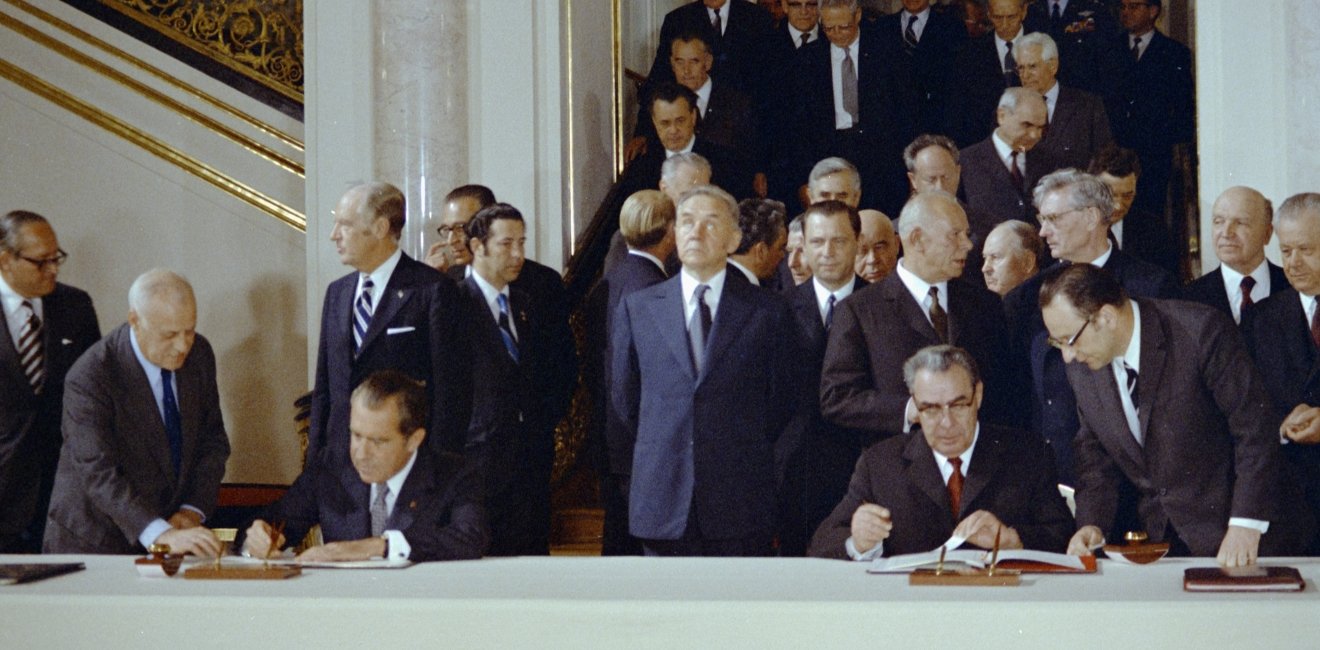“They want to give you a hydrafoil for Key Biscayne to ride around in. They’re pioneers in hydrofoil,” a delighted Henry Kissinger told Richard Nixon on May 14, 1972.
Kissinger was talking about the gift that the Soviet leaders had decided to present to the President during his upcoming trip to Moscow, the first official visit of a US leader to the Soviet Union since the Yalta Conference. In return, car-fancier Leonid Brezhnev, who had a personal collection of luxury Western automobiles, got a Cadillac. “A damn good car,” according to Nixon.
These exchanges of gifts, enthusiastically discussed by the US President and his National Security Advisor, sealed the deal for Nixon’s peace offensive, which, after months of uncertainty, culminated in the 1972 Moscow summit. The eight-day event, lasting between May 22-30, 1972, was presented by the US administration as the beginning of a new era of superpower relations.
The highlight of the Nixon-Brezhnev summit in Moscow was the signing of two agreements on May 26: the Strategic Arms Limitation Talks Interim Agreement, or SALT I, and the Anti-Ballistic Missile (ABM) Treaty. The first established a ceiling to the numbers of Intercontinental Ballistic Missiles (ICBMs) and Sea-Launched Ballistic Missiles (SLBMs) that each side could maintain. It did not require any reductions by either party. The ABM Treaty allowed the United States and the Soviet Union to deploy two defense sites (later reduced to one) to protect their respective capitals and one ICBM field.
Despite the enthusiasm expressed by the Nixon administration in the aftermath of the summit, the negotiations behind SALT I and the ABM treaty had been an extremely complicated affair lasting for two-and-a-half years, from November 1969 to May 1972.[1] Marred by multiple controversies, the whole process remained on the brink of failure until the very end. Both sides were skeptical of different aspects of the agreements and were reluctant to make substantial concessions that would have made the discussions any easier.
Nixon, a supporter of missile defense, was reluctant to impose limits on the US “Safeguard” ABM system, especially after his administration had struggled with Congress to get it approved in August 1969. As for SALT, the very definition of “strategic” was controversial. For the Soviets, any delivery system that was able to hit its territories had to be incorporated into the negotiations, including the so-called US “forward based systems,” namely the US nuclear weapons deployed in Europe. This was unacceptable for the United States, who were bound by commitments to their NATO allies.
The success of the negotiations was facilitated by the relatively limited scope and objectives of SALT, an executive agreement that was set to expire after just five years. The Interim Agreement only dealt with ICBMs and SLBMs and did not cover strategic bombers or warhead numbers. This allowed the United States and the Soviet Union to develop their strategic air forces and deploy Multiple Independently targetable Reentry Vehicles (MIRVs) virtually without limitations. Ultimately, both deals were based on unsteady compromises and unresolved issues.
While both SALT I and the ABM treaty had their faults, they also had great merits. They laid the foundations for future cooperation in the field of strategic arms control. The interim agreement, while temporary, limited for the first time the number of strategic delivery systems and set a ceiling to an almost unrestrained nuclear arms race that had led the two superpowers to deploy thousands of nuclear weapons in the previous two decades.
The ABM treaty held back the arms race by virtually halting an entire field of competition. It also eliminated a highly controversial system that had received mixed support in the United States and was not particularly appreciated by its European NATO allies. Until its demise in 2002, the treaty prevented the deployment of a nation-wide ABM system in the Soviet Union/Russia and in the United States.
The two deals also represented a first, albeit timid, step in the direction of honoring the commitments implied by Article 6 of the Non-Proliferation Treaty, which called for arms control and disarmament negotiations. Non-nuclear states that had reluctantly signed the NPT, such has Japan, considered both SALT I and the ABM treaty to be tangible progress toward nuclear disarmament. Lastly, both agreements established means of monitoring, assurances against violations, and sharing of information practices that became a first step in the creation of a trusted verification regime that represented an important pillar for future arms control negotiations. For all of the reasons, the 1972 Moscow summit was a milestone in the history of the Cold War.
Nevertheless, by the end of the decade, arms control had come to a halt, while the spirit of an oversold superpower détente, made up of popularly acclaimed summitry and enthusiastic gift-exchanges, had evaporated. The concept of “indivisibility of détente”, adopted by the US government, had interlocked the fate of arms control with the fortunes of détente between the superpowers. As détente gave way to a renewal of tensions between the two superpowers, arms control also lost its momentum.
This, however, is just one side of the story. Appreciation for SALT began to wane shortly after the 1972 summit. For arms control advocates, the agreement had achieved some important, but modest results. On the other hand, US critics of superpower détente believed that the whole SALT concept was flawed, and tried to undermine it. The Nixon administration contributed to the growth of this contradictory feeling toward the agreement by asking the US Congress, shortly after the summit, to fund new strategic systems to be deployed in the following years. Behind the rhetoric of the era of détente, the administration oversold the results of the 1972 summit and failed to explain to the US public that SALT was meant to regulate, not to end, the superpower nuclear competition.
Should we consider the season of strategic arms control inaugurated at the 1972 Moscow summit a lost opportunity or the beginning of a larger process that paved the way to greater results? Fifty years later, the merits and the shortcomings of a policy of détente based on unadventurous arms control negotiations, momentous summits, and hydrofoils are now debated in light of the disastrous state of today’s relationship between Russia and the United States.
[1] James Cameron, The Double Game. The Demise of America’s First Missile Defense System and the Rise of Startegic Arms Control (New York: Oxford University Press, 2018), pp. 107-160.








